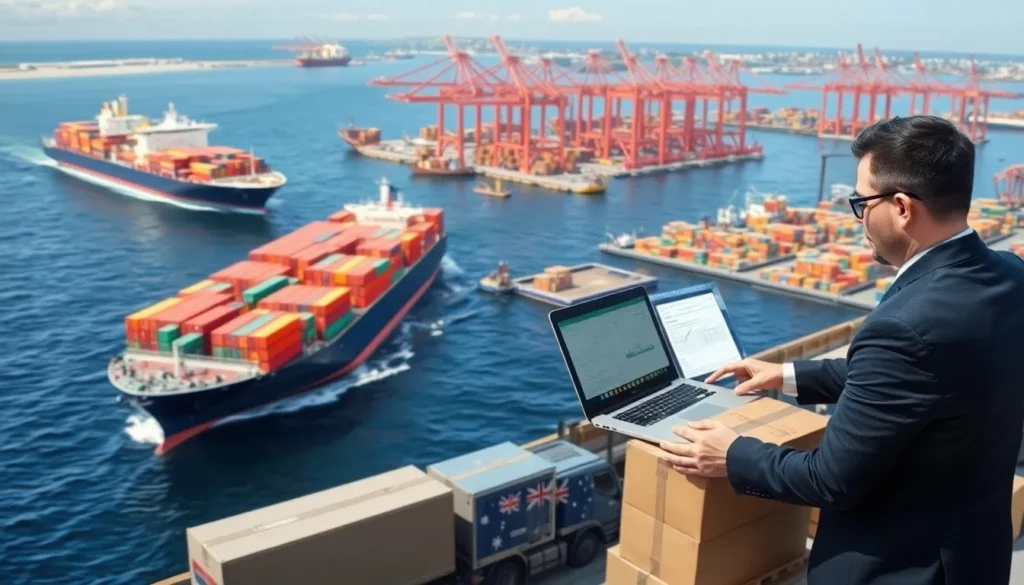Shipping goods from China to Australia demands a clear grasp of transport options, cost breakdowns, and regulatory requirements. This guide equips you with actionable strategies to streamline logistics, minimize expenses, and ensure smooth customs clearance by partnering with expert freight forwarders.
Most Important: Partnering with a reliable freight forwarder simplifies your logistics. These professionals offer end-to-end services, including customs clearance, carrier coordination, and real-time shipment tracking.
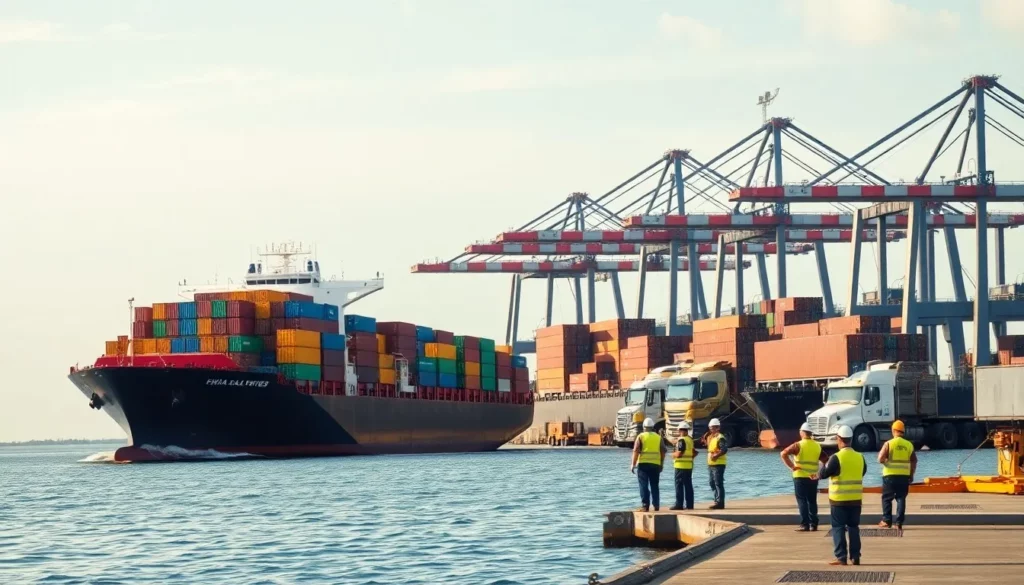
Comparing Shipping Methods: Air, Sea, or Express
Your choice of shipping method shapes your costs, delivery timelines, and inventory efficiency. Each option—sea, air, or express—caters to specific business needs, balancing speed, volume, and budget.
Sea Freight: Your Go-To for Bulk Shipments
Sea freight is the most cost-effective way to move large volumes from China to Australia. Stable market conditions keep container rates competitive, making it ideal for businesses with flexible delivery schedules.
Understanding Sea Freight Costs
Sea freight pricing depends on container usage, seasonal demand, and fuel costs. Consistent capacity between China and Australia keeps rates predictable, but peak seasons can trigger surcharges.
Tip: Plan shipments outside peak periods to avoid extra costs.
Full Container Load (FCL) Costs
FCL shipments dedicate an entire container to your cargo, offering better per-unit economics for large volumes. Rates from key Chinese ports to Australia remain competitive:
| Origin Port | Destination | 20ft Container | 40ft Container |
|---|---|---|---|
| Shanghai | Sydney | $2,050-$3,350 | $3,500-$5,000 |
| Guangzhou | Sydney | $1,900-$3,500 | $3,450-$4,950 |
| Ningbo | Melbourne | $2,050-$3,650 | $3,450-$5,050 |
| Shenzhen | Brisbane | $1,800-$3,500 | $3,650-$4,850 |
These are port-to-port rates, excluding surcharges like fuel or peak season fees.
Important warning: Always confirm inclusions to avoid unexpected charges.
Less than Container Load (LCL) Costs
LCL allows you to share container space, perfect for shipments under 15 cubic meters. Rates typically range from $40-$160 per cubic meter, depending on the route and cargo type. Consolidation may slightly extend transit times compared to FCL.
Door-to-Door Sea Freight Costs
Door-to-door sea freight simplifies logistics by bundling pickup, customs clearance, and final delivery. Expect rates around $110 per cubic meter with transit times of 30-40 days. This all-inclusive service reduces coordination headaches for busy importers.
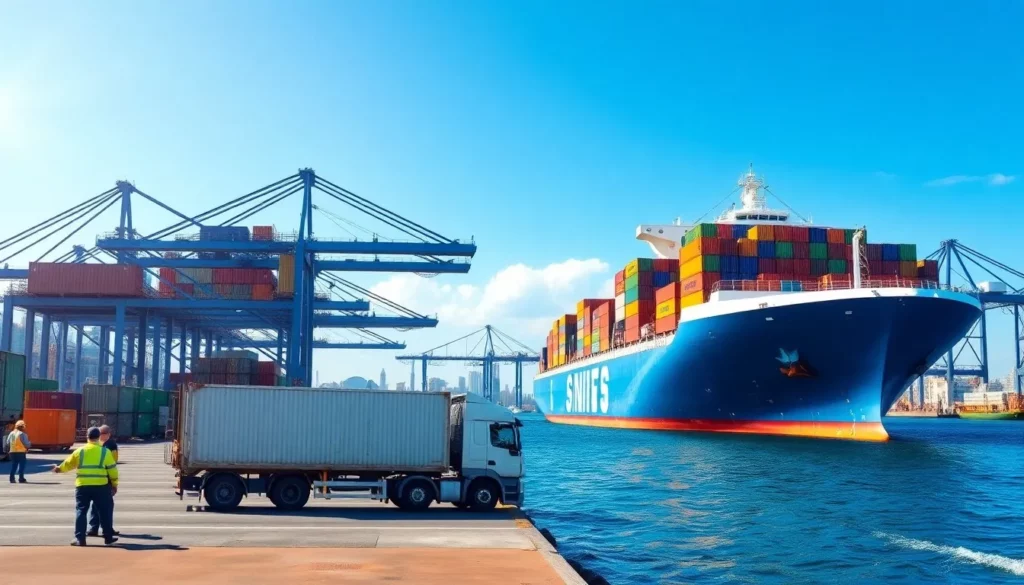
Sea Freight Transit Times
Transit times hinge on shipping schedules, port congestion, and customs efficiency. Direct routes are faster than transshipment options, which may save costs but add time.
Port-to-Port Transit Times
Direct sea freight from major Chinese ports (Shanghai, Shenzhen, Ningbo) to Australian hubs (Sydney, Melbourne, Brisbane) takes 10-18 days. Transshipment routes via regional hubs can stretch to 18-25 days.
Best practice: Choose direct services for time-sensitive goods.
Door-to-Door Transit Times
Door-to-door services, including inland transport and customs clearance, typically take 30-40 days. This accounts for documentation, export/import processes, and final delivery. A skilled forwarder can shave days off by preparing paperwork in advance.
Factors Impacting Transit Times
Port congestion, weather, or customs delays can disrupt schedules. Peak seasons may add 2-5 days, while unforeseen issues like vessel maintenance can cause variability.
Tip: Work with forwarders who proactively monitor and communicate potential delays.
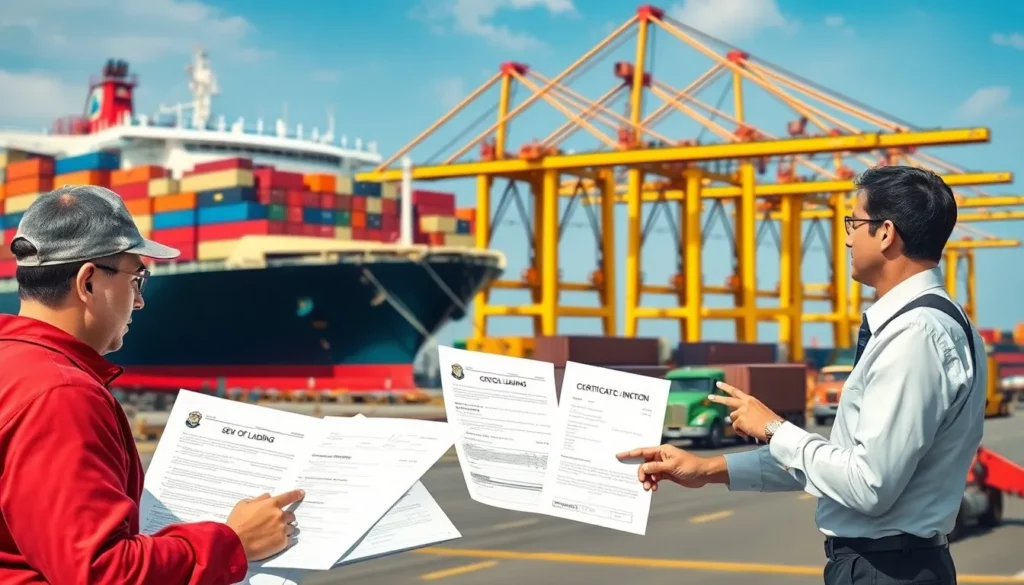
Sea Freight Documentation
Accurate documentation is critical to avoid customs delays. Submit complete paperwork before your cargo arrives to enable pre-clearance.
Bill of Lading (B/L)
The Bill of Lading is your legal contract and proof of ownership. Ensure it accurately details cargo, quantities, and consignee information. A “clean” B/L, noting no damage, simplifies insurance claims and delivery.
Important warning: Errors here can lead to costly disputes.
Commercial Invoice and Packing List
Your commercial invoice must include detailed product descriptions, values, and supplier-buyer details for Australian customs to calculate duties and GST. The packing list outlines weights, dimensions, and packaging specs, aiding customs inspections.
Certificate of Origin for ChAFTA Benefits
A Certificate of Origin unlocks reduced or zero duties under the China-Australia Free Trade Agreement (ChAFTA). Strict origin rules apply, so work with a customs broker to ensure compliance.
Key takeaway: Proper ChAFTA documentation can significantly cut import costs.
Ideal for These Businesses
Sea freight suits large retailers, manufacturers, and wholesalers with high-volume, non-urgent shipments. For example, a furniture retailer importing seasonal stock benefits from FCL’s cost savings, while a wholesaler uses LCL for diverse product lines.
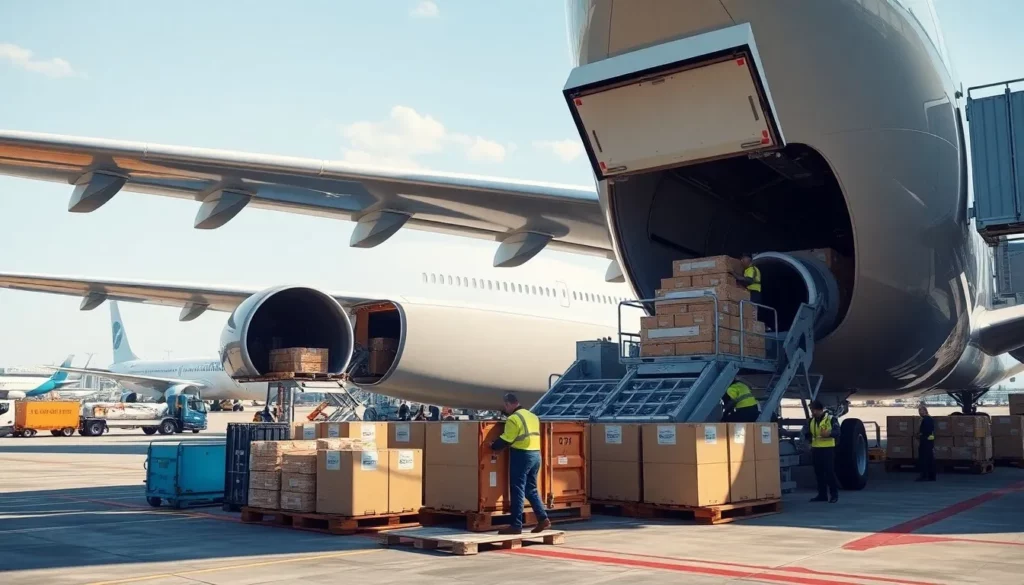
Air Freight: Speed for High-Value or Urgent Goods
Air freight delivers unmatched speed for time-sensitive or high-value items, though it comes at a premium. It’s perfect when rapid delivery outweighs higher costs.
Air Freight Cost Breakdown
Air freight rates reflect speed, fuel surcharges, and security fees. Prices vary by capacity, season, and chargeable weight (actual or volumetric). Expect fluctuations during peak demand.
Standard Air Freight Costs
For shipments over 100kg, rates range from $4.50-$6.10 per kilogram. Larger volumes often secure discounts:
| Weight Break | Sydney | Melbourne | Brisbane |
|---|---|---|---|
| 45kg+ | $6.10-$6.71/kg | $6.10-$6.71/kg | $6.10-$6.71/kg |
| 100kg+ | $4.57-$5.17/kg | $4.57-$5.17/kg | $4.57-$5.17/kg |
| 300kg+ | $4.29-$4.80/kg | $4.29-$4.80/kg | $4.29-$4.80/kg |
Special cargo (e.g., dangerous goods) incurs extra fees.
Tip: Use a forwarder’s volume agreements for better rates.
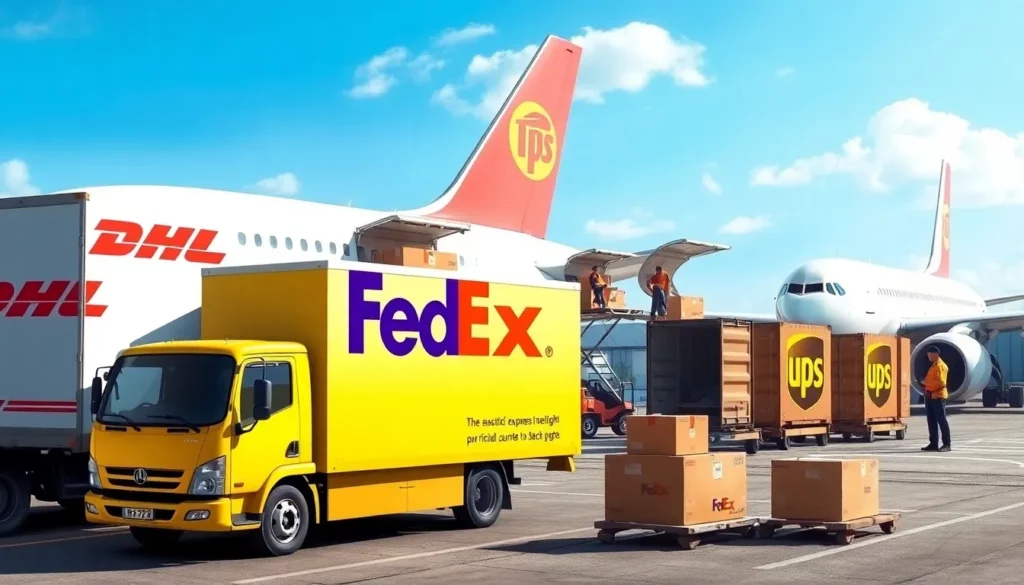
Express Air Freight (Courier) Costs
Express couriers like DHL, FedEx, and UPS charge $6-$15 per kilogram for door-to-door service with customs clearance included. These premium rates guarantee speed and tracking.
Best practice: Reserve express for urgent deliveries like product samples.
Volumetric vs. Actual Weight
Air freight charges the higher of actual weight or volumetric weight (volume ÷ 6000 cm³/kg). Bulky items may cost more despite low weight, so optimize packaging to reduce dimensions. For instance, a clothing importer saved 15% by compressing packaging.
Air Freight Transit Times
Air freight’s speed is its biggest advantage, with transit times far shorter than sea freight. Flight schedules and capacity influence availability.
Airport-to-Airport Transit
Direct flights from Chinese hubs (Guangzhou, Shanghai, Beijing, Shenzhen) to Australian cities take 2-5 days. Peak seasons may extend this slightly due to limited cargo space.
Tip: Book early during high-demand periods.
Door-to-Door Transit
Including pickup, customs, and delivery, door-to-door air freight takes 7-15 days. Efficient documentation speeds up clearance, preserving air freight’s time advantage.
Express Courier Transit
Express couriers deliver in 3-7 days with guaranteed service levels. Premium options can achieve next-day delivery to major cities, ideal for urgent spare parts or e-commerce orders.
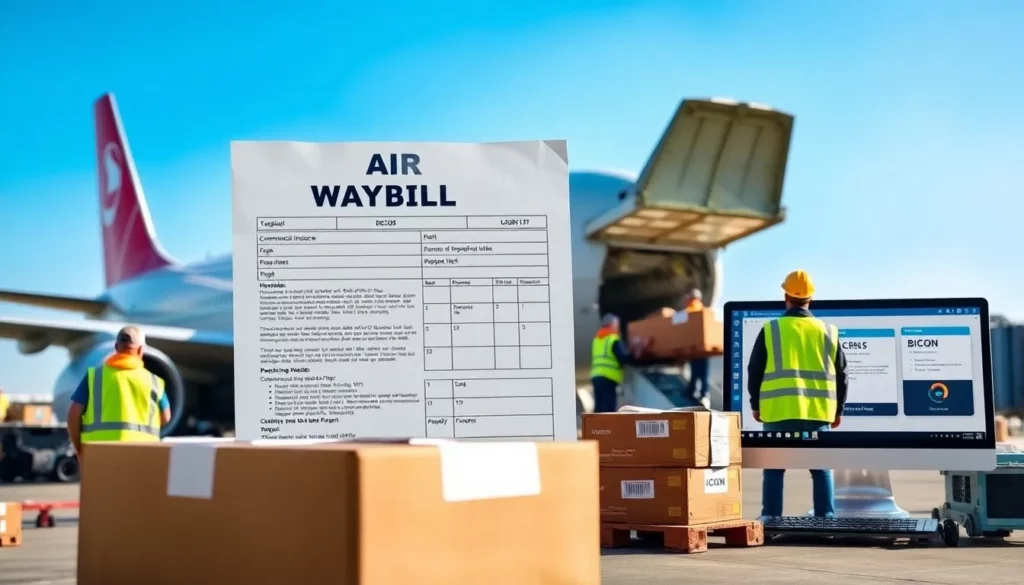
Air Freight Documentation
Air freight requires similar documents to sea freight, with an Air Waybill (AWB) replacing the Bill of Lading. Accuracy is critical to maintain speed advantages.
Air Waybill (AWB)
The AWB is your contract with the airline, detailing cargo and handling needs. Master and house AWBs clarify responsibilities in consolidated shipments.
Important warning: Inaccurate AWBs can delay cargo release.
Commercial Invoice and Packing List
These documents mirror sea freight requirements, supporting customs valuation and inspections. Ensure precision to avoid delays that negate air freight’s speed.
Import Permits for Restricted Goods
Some goods, like food or plant materials, need import permits applied for via Australia’s BICON system. Permits take 20 working days, so plan ahead.
Key takeaway: Check BICON early to avoid clearance issues.
Ideal for These Businesses
Air freight suits e-commerce brands, specialty importers, and firms with high-value or time-critical goods. For example, a medical device importer uses air freight to meet urgent hospital demands, justifying the cost with rapid delivery.

Express Shipping: Convenience for Small, Urgent Parcels
Express shipping offers a hassle-free, all-in-one solution for small or urgent shipments, with integrated customs clearance and door-to-door delivery.
Express Shipping Cost Overview
Express services charge premium rates for speed and convenience. All-inclusive pricing simplifies budgeting, covering transport, clearance, and delivery.
Per Kilogram Rates
Major couriers (DHL, FedEx, UPS) charge $6-$15 per kilogram, with volume discounts for regular shippers. Rates vary by service level and destination.
Tip: Establish a courier account for better pricing.
Delivered Duty Paid (DDP) Options
DDP includes all costs—transport, duties, and taxes—eliminating surprises. Accurate product classification ensures precise quotes. For example, an e-commerce seller uses DDP to simplify budgeting for small orders.
When Express Costs Make Sense
Express shipping is worth the cost for urgent needs like product launches or customer samples. Faster delivery reduces inventory holding costs, offsetting higher rates.
Best practice: Compare total costs, including storage, when evaluating express.
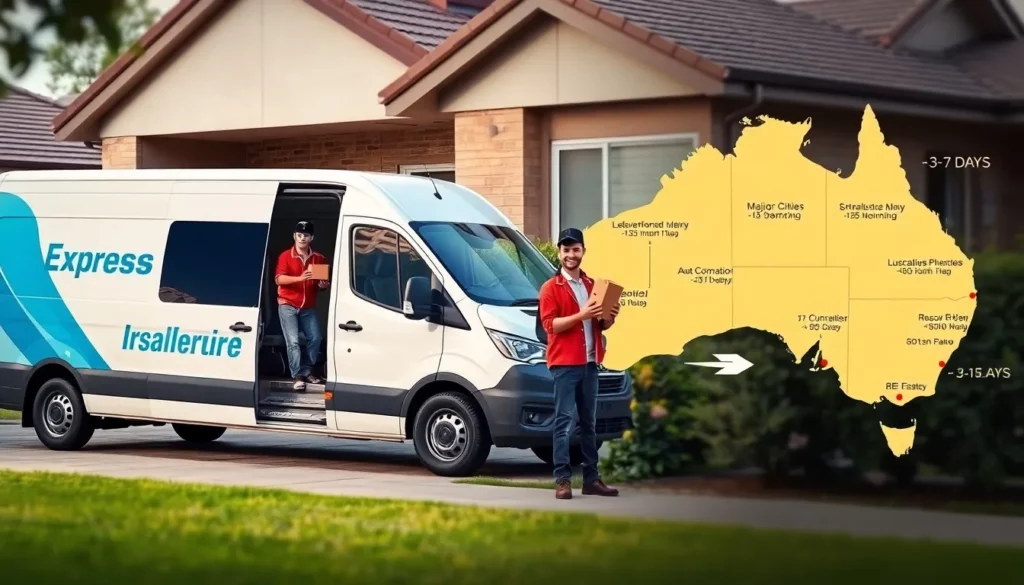
Express Shipping Transit Times
Express prioritizes speed, with guaranteed delivery windows based on service level and destination.
Door-to-Door Delivery
Expect 3-7 days to major Australian cities, with remote areas adding 1-2 days. Premium services offer next-day delivery for critical needs.
Tip: Choose standard express for reliable, cost-effective delivery.
Factors Affecting Speed
Service level and destination remoteness impact delivery times. Rural areas require extra transit, and premium services cost more but guarantee faster delivery.
Express Documentation
Express couriers streamline paperwork, handling most customs declarations. You provide a commercial invoice and product details, reducing complexity.
Simplified Paperwork
Integrated systems minimize errors and speed up clearance. Digital platforms allow easy document submission.
Key takeaway: Express is ideal for low-complexity shipments.
Low-Value E-commerce Shipments
Parcels under $1,000 AUD qualify for simplified customs procedures, speeding up clearance. E-commerce businesses benefit from this for small consumer orders.
Ideal for These Businesses
Express suits startups, SMEs, and corporate teams shipping samples, documents, or small e-commerce orders. For instance, a startup uses express to send prototypes to Australian clients, ensuring fast market feedback.
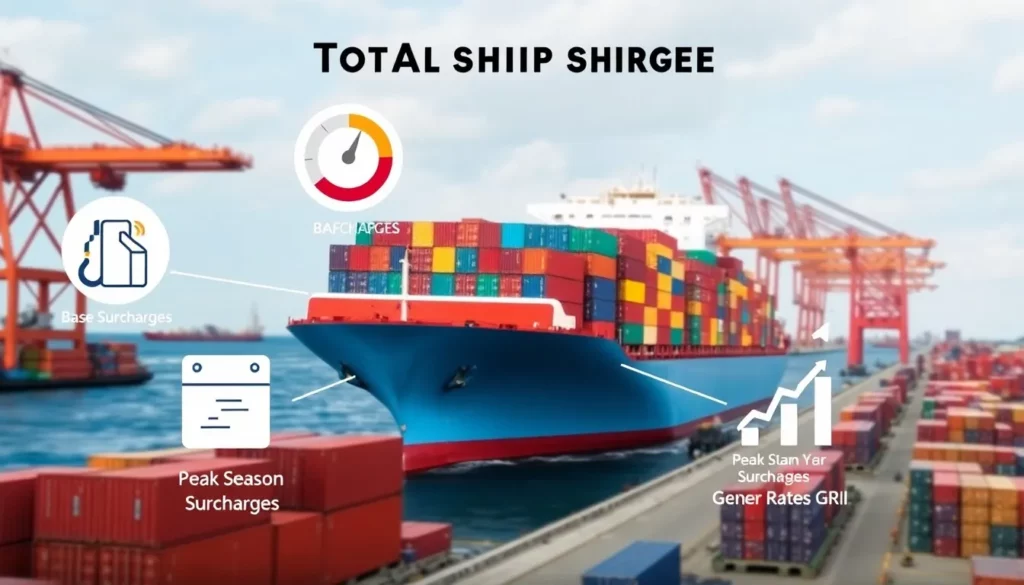
Breaking Down Total Shipping Costs
Understanding your total landed costs—beyond base freight rates—enables accurate pricing and profitability. Multiple cost components affect your bottom line.
Freight Charges and Surcharges
Base freight rates are just the start. Surcharges for fuel, peak seasons, or rate adjustments can significantly increase expenses.
Base Freight Rate
This core cost covers transport from origin to destination. Rates fluctuate with market demand, but forwarders secure better pricing through carrier relationships.
Tip: Compare quotes for transparency.
Fuel Surcharges (BAF/FAF)
Bunker Adjustment Factor (sea) and Fuel Adjustment Factor (air) adjust monthly based on fuel prices, adding 10-20% to rates. Energy market volatility drives these costs.
Peak Season Surcharges (PSS)
High-demand periods like Chinese New Year or pre-Christmas trigger PSS, adding $200-$500 per container for sea freight.
Best practice: Ship early to avoid these fees.
General Rate Increases (GRI)
Carriers adjust rates quarterly, increasing costs by 5-15%. Forwarders provide advance notice, allowing you to lock in rates before hikes.
Tip: Plan shipments around GRI announcements.
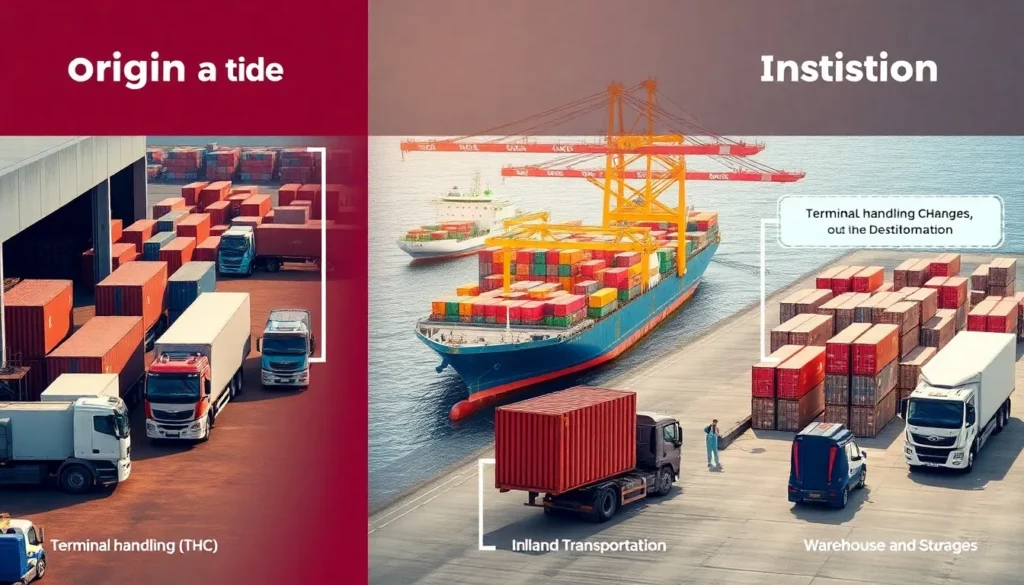
Origin and Destination Charges
Handling and transport at both ends add to costs, covering terminal operations and inland logistics.
Terminal Handling Charges (THC)
These fees ($100-$300 per container) cover loading, unloading, and documentation at ports or airports. Origin (OTHC) and destination (DTHC) charges apply separately.
Inland Transportation
Trucking from factory to port or airport costs $50-$200, depending on distance. Destination trucking adds similar fees. Door-to-door services bundle these costs for simplicity.
Warehousing and Storage
LCL consolidation may incur $10-$30 per cubic meter for origin warehousing. Destination storage fees apply if goods await clearance.
Important warning: Clear customs promptly to avoid storage costs.
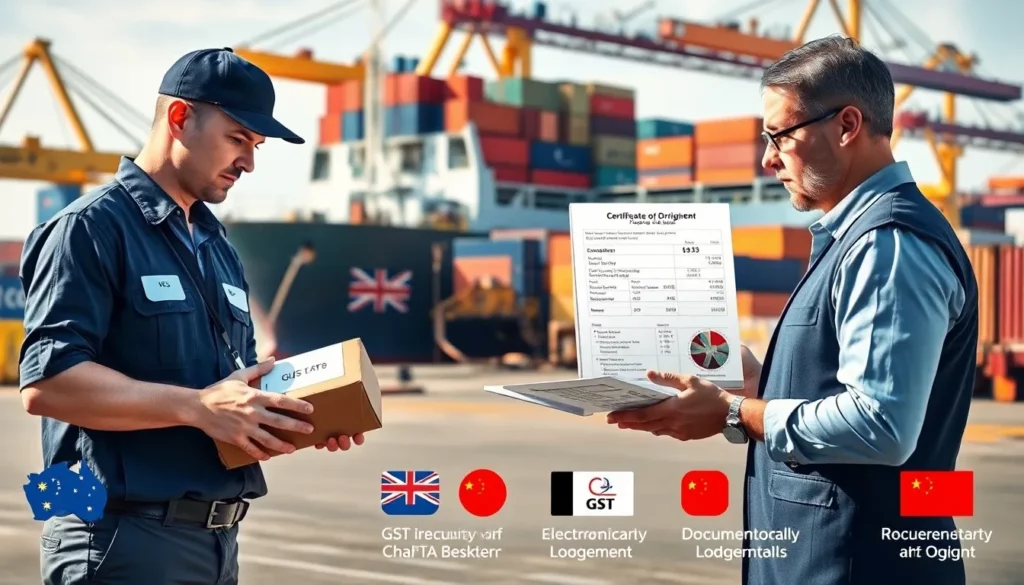
Customs Duties, Taxes, and Fees
Australian import rules mandate duties and taxes, calculated on your shipment’s value and classification.
Australian GST
A 10% Goods and Services Tax applies to the total of cost, insurance, freight (CIF), and duty. For example, a $10,000 shipment with $100 insurance, $1,000 freight, and $550 duty incurs $1,165 GST.
Customs Duty
Most goods face a 5% duty on CIF value, based on HS code classification. Accurate codes ensure correct rates.
Tip: Use a customs broker for precise classification.
ChAFTA Benefits
Qualifying Chinese goods enjoy reduced or zero duties under ChAFTA. A Certificate of Origin proves eligibility, but strict rules apply.
Key takeaway: Leverage ChAFTA to lower costs.
Import Processing Charge (IPC)
Australian Border Force charges IPC for declaration processing, varying by value and lodgement method:
| Shipment Value | Electronic Lodgement | Documentary Lodgement |
|---|---|---|
| Under $1,000 | $0 | $90 |
| $1,000-$10,000 | $50 | $192 |
| Over $10,000 | $152 | $192 |
Biosecurity fees ($45 air, $66 sea) apply for shipments over $1,000.
Tip: Use electronic lodgement to save on IPC.
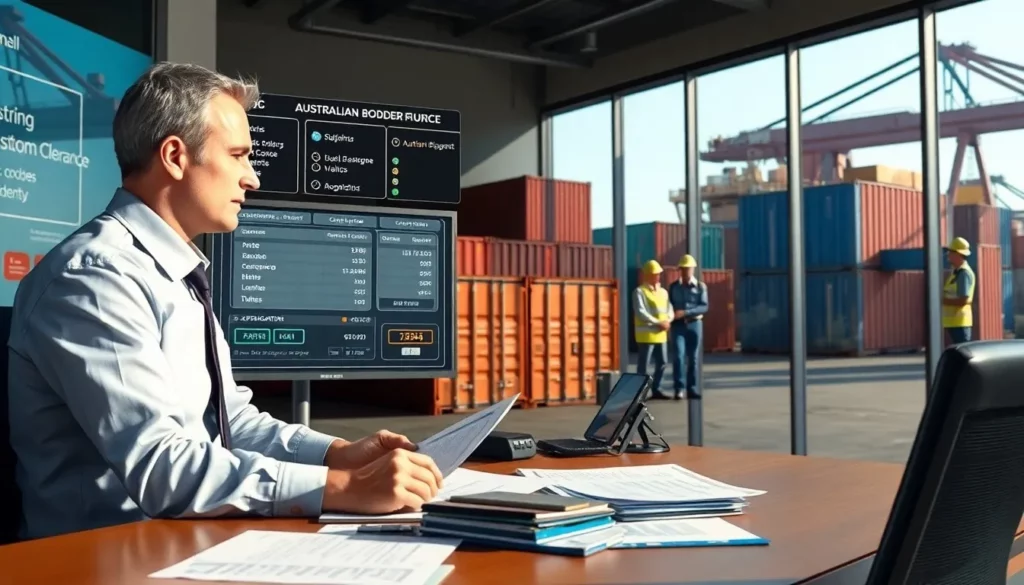
Mastering Customs Clearance and Documentation
Smooth customs clearance prevents delays and penalties. A customs broker’s expertise ensures compliance with Australia’s strict regulations.
Customs Clearance Process
Australian Border Force and the Department of Agriculture oversee a structured clearance process, streamlined by digital systems.
Pre-Arrival Reporting
Submit cargo details before arrival via electronic systems. Early reporting speeds up clearance, reducing delays.
Best practice: Prepare documents well in advance.
Import Declaration
Your declaration details HS codes, values, and duties. Customs brokers typically handle this, ensuring accuracy. Electronic lodgement processes most declarations in 24 hours.
Customs Broker’s Role
Brokers manage classification, valuation, and communication with authorities. Their expertise minimizes delays and optimizes duty costs.
Key takeaway: A broker is invaluable for complex shipments.
Australian Border Force (ABF) Inspection
ABF conducts risk-based inspections, with rates varying by cargo type and importer history. Quarantine checks apply to biosecurity-sensitive goods, adding time.
Tip: Use BICON to identify risks early.
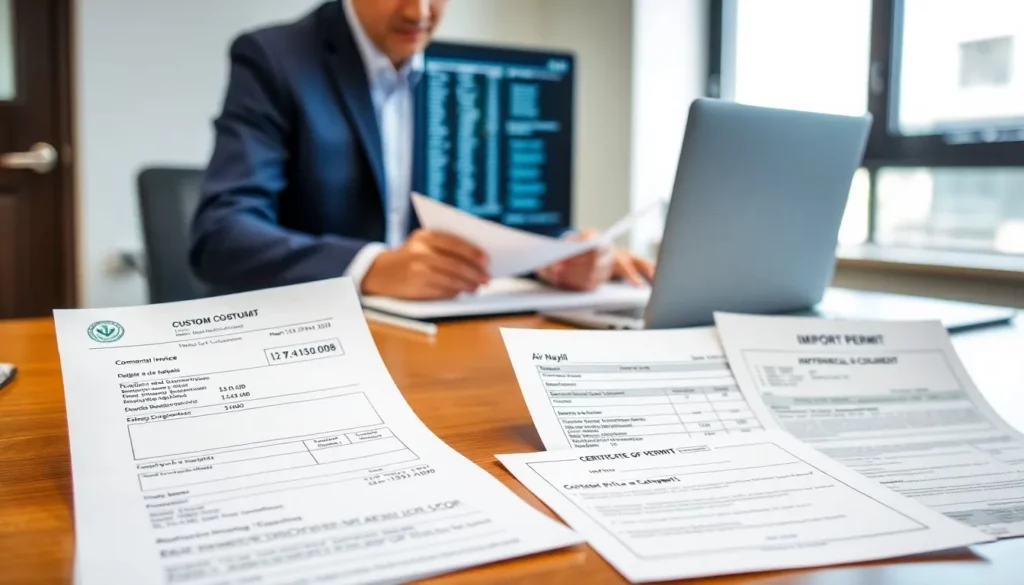
Mandatory Import Documents
Complete, accurate documents are non-negotiable for efficient clearance. Errors lead to delays or penalties.
Commercial Invoice
Include supplier/buyer details, product descriptions, values, and Incoterms. Accurate invoices ensure correct duty and GST calculations.
Important warning: Valuation errors trigger disputes.
Packing List
Detail weights, dimensions, and packaging specs. This supports inspections and prevents classification issues.
Tip: Double-check for accuracy.
Bill of Lading or Air Waybill
These transport documents prove cargo receipt and terms. Clean documents avoid release issues. House/master versions clarify responsibilities in consolidations.
Certificate of Origin
Prove ChAFTA eligibility with this document. Compliance with origin rules is critical for duty savings.
Key takeaway: Don’t miss out on ChAFTA benefits due to paperwork errors.
Import Permits
Restricted goods (e.g., food, plants) require permits via BICON, taking 20 days to process.
Important warning: Unpermitted goods face export or destruction.
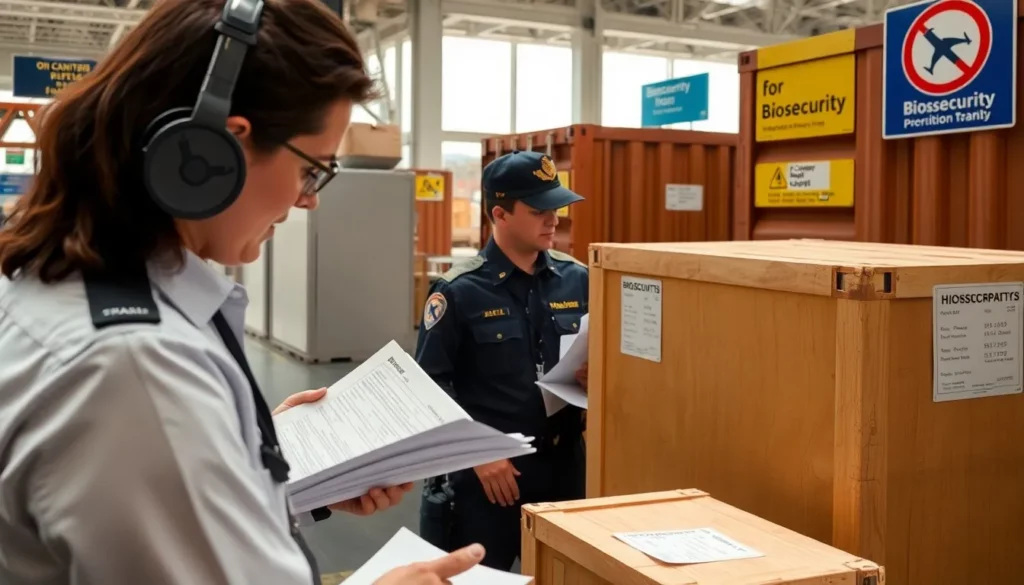
Avoiding Common Customs Pitfalls
Mistakes in documentation or compliance can derail your shipment. Stay proactive to sidestep these issues.
Incorrect Valuation or HS Codes
Wrong valuations or HS codes lead to incorrect duties and delays. Brokers ensure accuracy, minimizing risks.
Tip: Invest in professional classification services.
Incomplete Paperwork
Missing or inaccurate documents cause clearance delays. Review all paperwork before submission.
Best practice: Use a broker’s document review services.
Biosecurity Non-Compliance
Australia’s strict biosecurity rules protect against pests. Non-compliant goods face seizure. Check BICON for requirements like ISPM-15 wood treatment.
Important warning: Non-compliance can be costly.
Prohibited or Restricted Imports
Prohibited goods are banned outright; restricted items need permits. Verify compliance via BICON to avoid seizures.
Key takeaway: Always check restrictions before shipping.
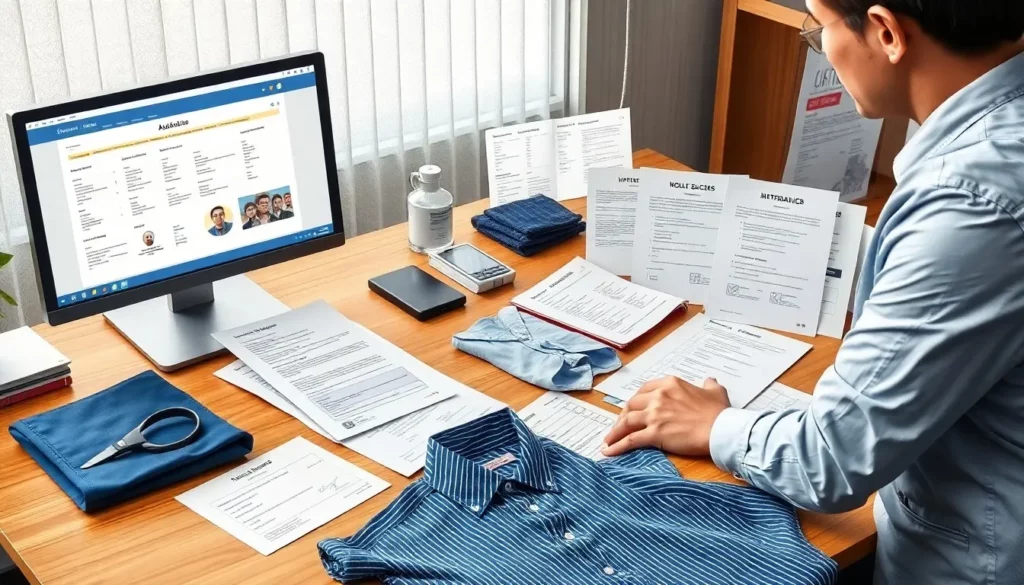
Your Step-by-Step Import Process
Importing from China to Australia requires careful planning across four stages. Follow this roadmap for success.
Stage 1: Sourcing and Supplier Vetting
A reliable supplier is the backbone of your import operation. Thorough vetting ensures quality and reliability.
Finding Suppliers
Platforms like Alibaba connect you with verified suppliers. Check business licenses, certifications, and references. Trade assurance adds protection.
Tip: Request samples before committing.
Due Diligence
Verify supplier credentials through factory audits, quality certifications, and financial checks. For example, a clothing importer avoided delays by confirming production capacity upfront.
Negotiating Incoterms
Incoterms define responsibilities. FOB balances risk, while CIF includes insurance, and DDP covers duties.
Best practice: Choose EXW or FOB for greater control.
Stage 2: Planning and Booking
Strategic planning optimizes costs and schedules. Compare options and secure bookings early.
Comparing Freight Quotes
Request quotes from multiple forwarders, analyzing all charges and services.
Tip: Look beyond price to assess experience and capabilities.
Choosing a Shipping Method
Match your method to cost, speed, and volume needs. Sea freight suits bulk; air or express fits urgent, low-volume goods.
Key takeaway: Align method with business goals.
Arranging Cargo Insurance
Insure at 110% of CIF value to cover risks. Rates are 0.3-0.5% of value.
Best practice: Always insure to protect against loss or damage.
Confirming Booking
Secure space and schedules with your forwarder. Early booking avoids peak season shortages.
Tip: Align bookings with inventory needs.
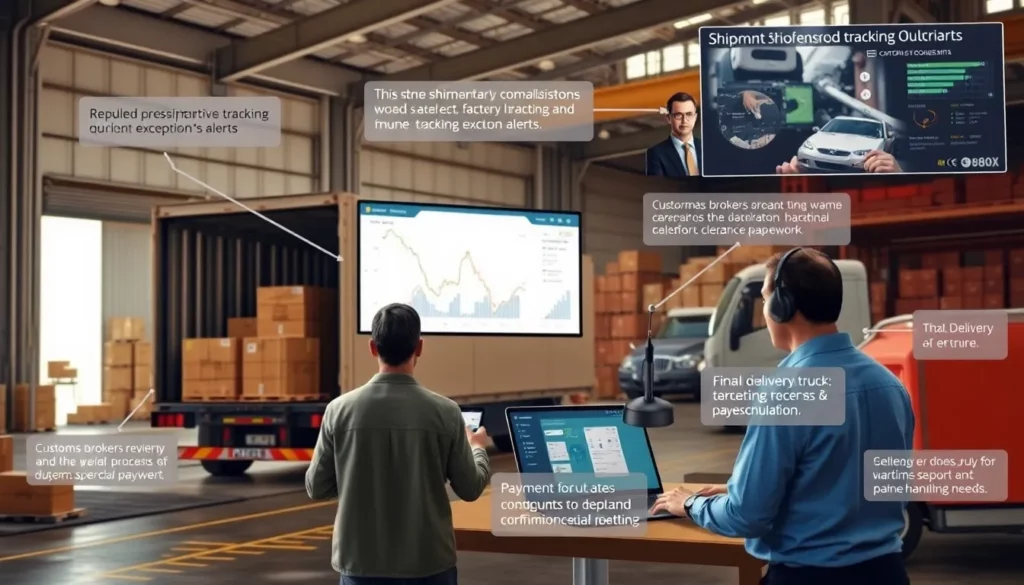
Stage 3: Shipment Execution and Monitoring
Active management ensures smooth transit. Stay informed to address issues promptly.
Coordinating Inland Transport
Arrange factory-to-port transport with proper packaging and labeling. Coordinate documentation to avoid delays.
Tip: Use forwarders for seamless handoffs.
Tracking Shipments
Use forwarder portals or carrier websites for real-time updates. Exception alerts help you mitigate delays.
Key takeaway: Visibility drives proactive management.
Managing Communication
Clear communication among suppliers, forwarders, and consignees prevents errors. Regular updates keep everyone aligned.
Best practice: Centralize communication through your forwarder.
Stage 4: Arrival, Clearance, and Delivery
Efficient arrival handling completes your import. Coordinate closely for a smooth finish.
Working with Customs Brokers
Brokers prepare documentation and manage clearance before arrival. Their expertise ensures quick release.
Tip: Provide all details early.
Paying Duties and Taxes
Settle duties, GST, and fees promptly to release cargo. Brokers can handle payments.
Important warning: Delays in payment stall delivery.
Arranging Final Delivery
Schedule last-mile delivery to match your warehouse’s capacity. Confirm special handling needs.
Key takeaway: Plan delivery to avoid bottlenecks.
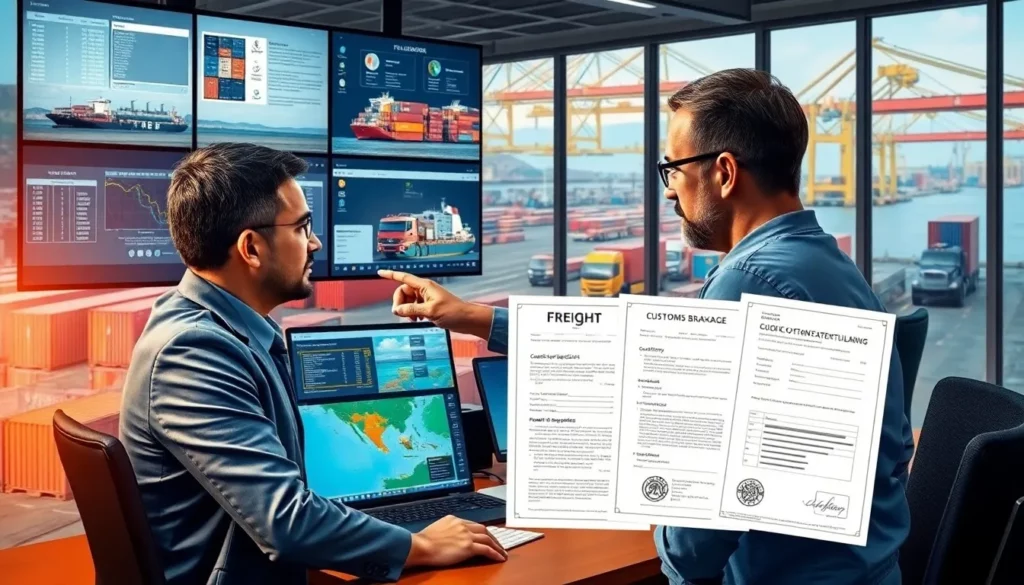
Choosing Your Freight Forwarder
A skilled freight forwarder is your partner in success. Evaluate candidates based on expertise and services.
Freight Forwarder Services
Forwarders offer more than transport, simplifying your supply chain with integrated solutions.
Freight Consolidation
LCL consolidation saves costs for small shipments by sharing container space. Forwarders handle secure consolidation and documentation.
Customs Brokerage
Integrated brokerage ensures compliance and fast clearance. Brokers manage classification, permits, and duties.
Key takeaway: Choose forwarders with in-house brokerage.
End-to-End Logistics
A single point of contact streamlines coordination across transport, clearance, and delivery. This reduces errors and boosts efficiency.
Supply Chain Expertise
Forwarders advise on routing, consolidation, and compliance, optimizing costs. For example, I helped a client cut 10% off costs by switching to LCL during low season.

Evaluating Forwarders
Select a forwarder based on these criteria to ensure a strong partnership.
China-Australia Expertise
Look for proven experience in this trade lane, with knowledge of ports, regulations, and carriers. This ensures competitive rates and reliable service.
Service Range
Choose forwarders offering air, sea, express, customs, and warehousing. Comprehensive services simplify vendor management.
Tip: Verify multi-modal capabilities.
Technology and Tracking
Robust tracking systems provide visibility and efficiency. Online portals should offer document management and real-time updates.
Best practice: Test their platform before committing.
Reputation and References
Check testimonials and references from similar businesses. A strong industry reputation signals reliability.
Tip: Ask for case studies relevant to your needs.
Tailored Solutions
Forwarders should offer customized services, like e-commerce fulfillment or project cargo handling, to match your segment’s needs.
Key takeaway: Prioritize partners who understand your industry.

Conclusion
Mastering China-Australia shipping requires strategic choices in methods, compliance, and partnerships. A trusted freight forwarder simplifies logistics, ensures compliance, and optimizes costs, letting you focus on growing your business.
Frequently Asked Questions (FAQs)
1. What’s the most cost-effective way to ship a small parcel (under 20kg) from China to Australia?
Express couriers like DHL, FedEx, or UPS offer rates of $6-$15 per kilogram, including door-to-door delivery and customs clearance. For small parcels, their convenience often outweighs sea freight’s lower per-unit costs.
2. How can I avoid unexpected delays and costs in Australia?
Submit accurate documentation early and use a customs broker to navigate regulations. Pre-arrival lodgement and proactive forwarder communication minimize surprises.
Tip: Double-check paperwork before shipping.
3. Are there packaging requirements for Australian biosecurity?
Packaging must be free of soil, plants, or pests. Wooden materials need ISPM-15 treatment. Check BICON for your product’s specific requirements to avoid quarantine issues.
Important warning: Non-compliant packaging risks seizure.
4. What’s the difference between a freight forwarder and a customs broker?
Forwarders manage logistics; brokers handle customs clearance. Many forwarders offer both services, but complex shipments may benefit from a specialized broker. Assess your needs to decide.
5. How does Chinese New Year affect shipping?
Factory closures and high demand disrupt schedules and raise rates. Peak season surcharges apply, and delays extend post-holiday.
Best practice: Ship early or explore alternate routes like Hong Kong to maintain continuity.

